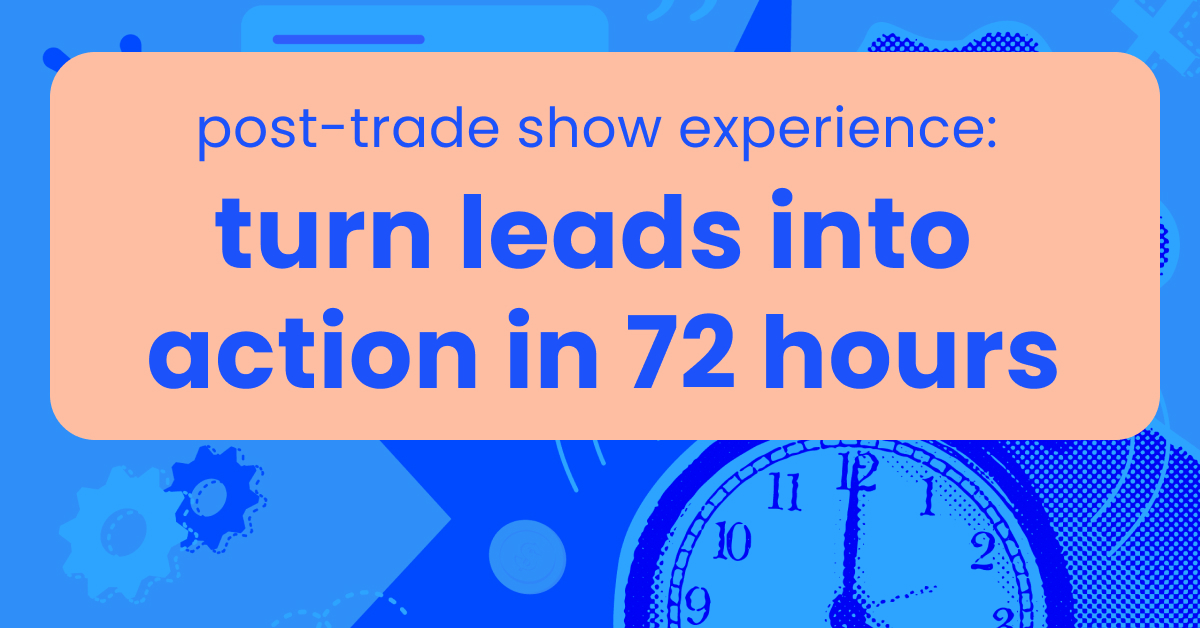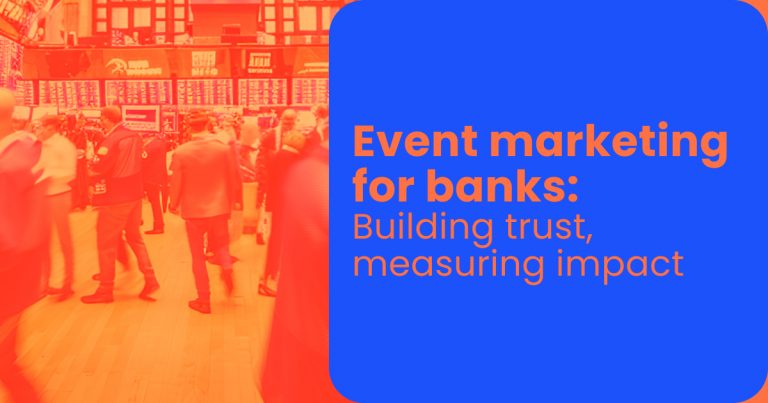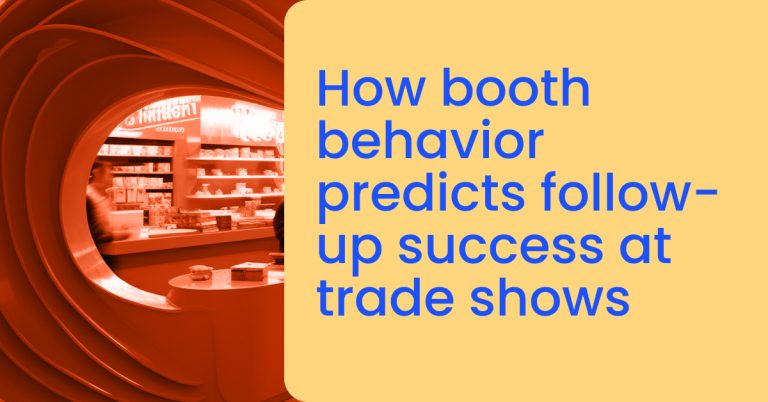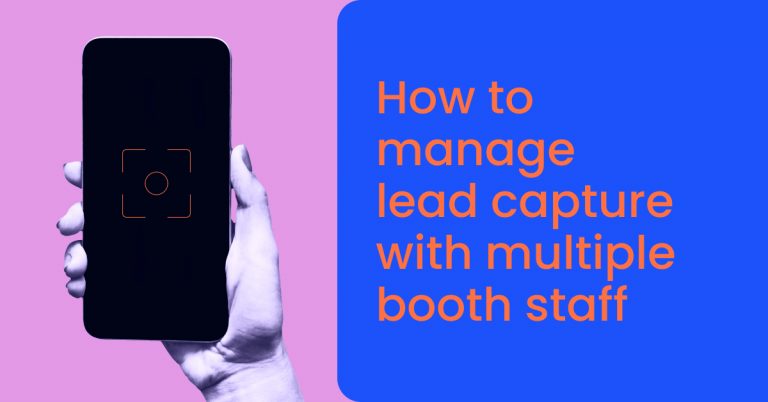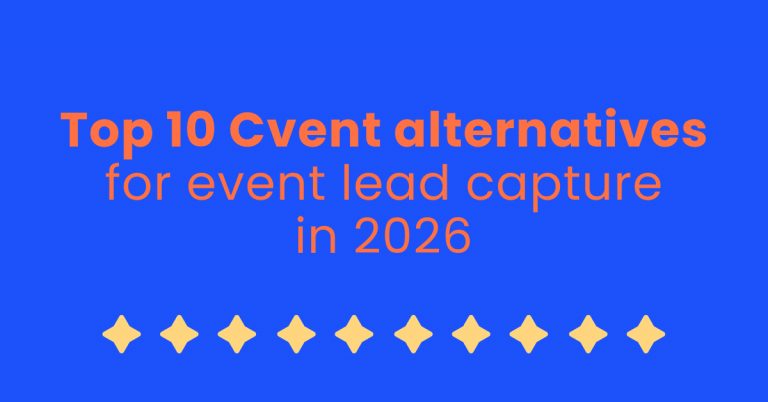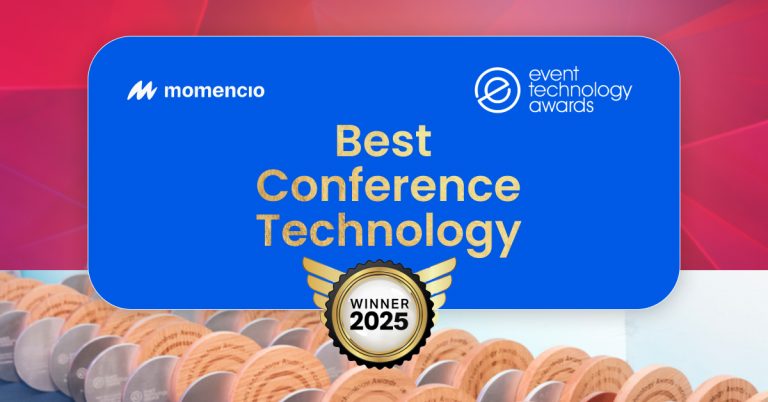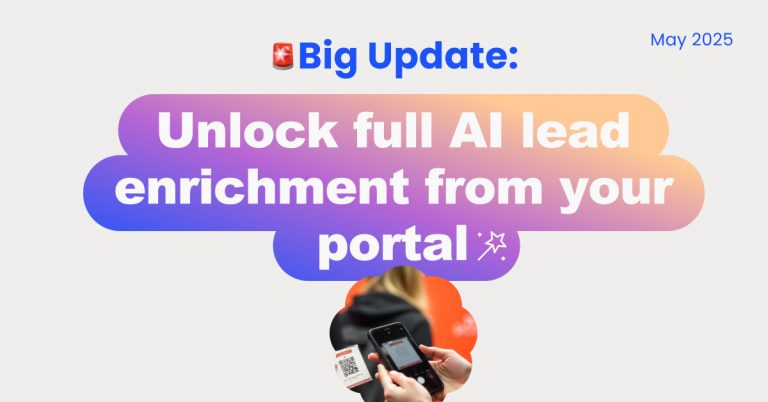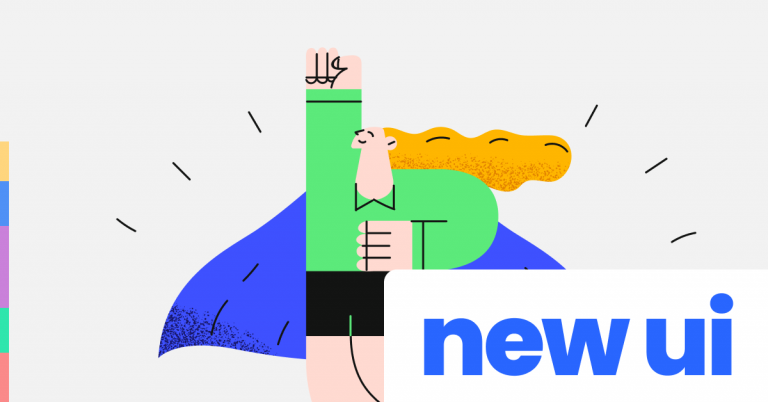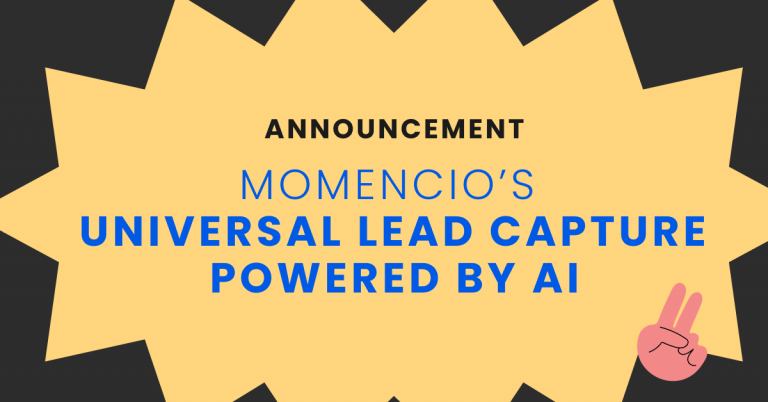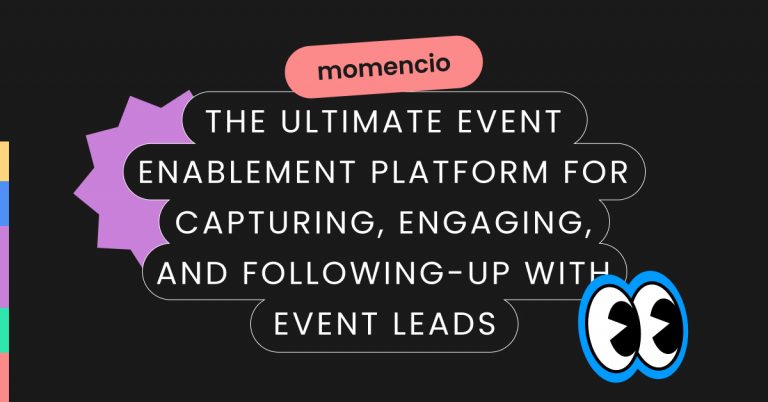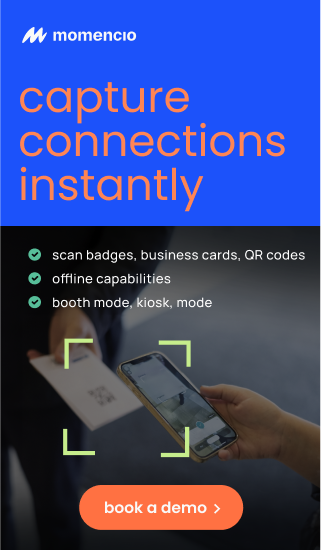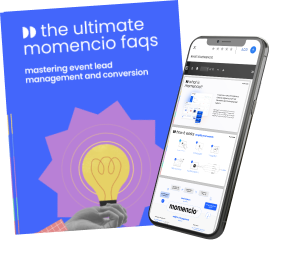Trade shows do not end at teardown. The real work starts when the venue empties and your team switches from collecting attention to turning that attention into action. The post-trade show experience is where momentum is either converted into pipeline or allowed to evaporate. The difference comes down to two things that most teams underestimate: speed and continuity. Speed is how quickly you transform a conversation into a relevant next step. Continuity is how closely your follow-up mirrors the energy and specifics of the booth chat.
Most companies underperform here because the first 72 hours are noisy. Sales is traveling. Marketing is closing vendor loops. Operations is busy with returns. In the chaos, the list of “leads to follow up” becomes a spreadsheet problem, not a buyer problem. This playbook fixes that by giving you a crisp, field-ready method that connects the booth to your CRM, your content, and your team’s calendar with as little friction as possible. It keeps the common structure that most high-ranking pages use, while filling the gaps they miss: a concrete on-floor capture system, instant personalized handoff, behavior-triggered follow-ups, privacy hygiene, and measurement that sales respects.
Why the 72-hour window matters now
Attention is perishable. The booth conversation that felt vivid on Friday will be faint by Tuesday. Your goal for the post-trade show experience is simple: compress the time between the conversation and a meaningful step that moves the buyer forward. That step might be a scheduled demo, a collaborative business case, or a personalized content review that helps a champion sell internally. If you do not engineer that step within 72 hours, you are competing against memory, inbox overload, and other vendors who moved faster.
The 72-hour frame is not a random number. It is the period in which:
-
People still remember faces, jokes, and micro-moments from the booth.
-
Internal champions still have social capital to push a next step because their colleagues remember attending the same event.
-
Your own team still remembers the nuances of each chat well enough to personalize intelligently.
There is also a practical constraint. Event follow-up windows collide with travel, weekends, and time zones. That is why your plan must reduce dependence on manual effort and increase dependence on prebuilt flows. If your process requires a designer, a copywriter, and a sales engineer to craft the first touch, you will miss the window. If your process is one tap to assemble a relevant microsite, one click to send, and automatic tracking that prompts the next move, you will hit the window even on a red-eye.
Step 1: Capture context while still on the floor
You cannot personalize well after the fact if you did not capture the right context during the conversation. A badge scan is not a story. A business card is not intent. What you need is a compact, repeatable way for reps to capture the truth of the conversation without breaking flow.
The four-context model that actually travels from booth to CRM
-
Problem: the buyer’s stated pain or job to be done in their own words.
-
Priority: how soon they need a solution and what unlocks the timeline.
-
Proof: what would convince them next, for example an ROI calculator, a short video, a customer story, a security pack, or a reference call.
-
Next move: the smallest concrete action you both agreed to, for example send the calculator, book a demo with a colleague, or share a tailored case study.
What to capture beyond the basics
-
Persona: picklist like Event Manager, Revenue Ops, Sales Director, CMO, Procurement.
-
Context tags: three to five top pain drivers like slow lead routing, poor attribution, content chaos, rep follow-up latency, CRM duplication.
-
Evidence signals: which asset category they asked for, such as case study, video walkthrough, pricing overview, objection handling notes.
-
Consent: explicit yes to hear from you and the channel of choice.
Make it easy for reps to do the right thing
-
Use picklists and toggles, not open text fields, for 80% of inputs.
-
Add voice-to-text for nuance. A 12 second voice note transcribed and attached beats no note.
-
Precreate quick-phrases for common situations like “asked for ROI example” or “needs sales engineering for SSO and security.”
AI EdgeCapture gives you selectable fields for problem, priority, proof, and next move, plus instant voice-to-text. Consent capture can be part of the same flow so you leave the booth with data you can act on immediately.
Step 2: Ship everything to CRM instantly and smartly
If data waits in a spreadsheet or a badge system for a week, you will lose speed and accuracy. Instant sync to CRM is the baseline. Smart sync is the upgrade that prevents mess and reduces friction for sales.
Data hygiene that prevents downstream pain
-
Dedupe on email and company name with fuzzy logic. Avoid creating five versions of the same account because of capitalization or punctuation differences.
-
Normalize titles and departments so routing and reporting work on day one.
-
Map fields one to one between capture and CRM. If you capture “proof needed,” do not bury it in a generic notes field. Map it to a custom field that sales can filter.
Routing that mirrors your go-to-market
-
Define ownership rules in advance: territory by region, vertical by industry, named accounts to account owners.
-
Route by intent tier, not just geography. A high-intent lead can bypass general queues and land directly with a senior rep.
-
Use tags that describe what happened at the booth so the owner sees context at a glance, for example “saw 3-minute demo,” “scanned security pack,” “brought colleague.”
Minimum viable CRM payload for each new lead
-
Contact: name, title, email, phone, LinkedIn.
-
Account: company name, website, headcount, industry.
-
Context: problem, priority, proof, next move, consent channel.
-
Source detail: event name, date, booth number if relevant, rep name.
momencio syncs to CRM in real time, dedupes records, applies tags and routing rules, and surfaces the context fields as first-class data so reps know exactly why this lead matters and what to do next.
Step 3: Build behavior-triggered, tiered follow-up flows
Generic blasts are forgettable. The best post-trade show follow-up adapts to the story you captured and the way the buyer behaves after you reach out. Tiering lets you focus effort where it pays off, while automation keeps the long tail alive without busywork.
Define your tiers with objective criteria
-
Tier 1 high intent: problem is acute, priority is near-term, or they asked for proof that indicates buying motion. These get same-day personalized content and human outreach.
-
Tier 2 moderate intent: problem is real but timeline is flexible. These get personalized content plus a nurture sequence and light retargeting.
-
Tier 3 long-term nurture: curious but not urgent, or no concrete next step. These get educational value, occasional check-ins, and event invites.
The personalized microsite that anchors your first touch
Treat the first follow-up like a booth-in-a-link. It should feel like you continued the conversation, not started a new one. Use a microsite with:
-
A one-line greeting that references their situation.
-
Three assets matched to the proof they asked for. For example, a 90 second video walkthrough, a case study in their vertical, and an ROI explainer.
-
One action that fits the next move you agreed to. For example, “book a 20-minute review,” “see pricing ranges,” or “share internally.”
-
An optional trust element like a logo wall or security overview, depending on what they valued.
Sample greeting lines for the microsite
-
“You mentioned rep follow-up latency. Here is how teams cut it from days to minutes.”
-
“You asked for a short walkthrough to share with your VP. Start with this 90-second clip.”
-
“You wanted proof from manufacturing. This case study matches your rollout model.”
Channel and cadence that respects attention
-
Day 0 to 1: send the microsite link from the rep they met, then add a short text or LinkedIn note where appropriate.
-
Day 2 to 3: if the microsite was opened but no action was taken, send a one-line nudge that points to the most relevant asset, not a generic reminder.
-
Day 5 to 7: add a light nurture email that broadens the story, for example a customer quote or a one-page business case template.
-
Day 10 to 14: for Tier 2 and Tier 3, start a spaced sequence. For Tier 1, ensure a live call is scheduled or a quick loom is sent if calendars slip.
What to automate and what to keep human
Automate the trigger and the assembly of the microsite. Automate the first nurture for Tier 2 and Tier 3. Keep the short message that references the exact conversation human. Buyers can tell when a note was sent by a human who remembers them versus a campaign that mentions the event by mail merge.
Example emails you can copy
Subject #1: the 90-second clip you asked for
Body #1: Great meeting you near the north entrance. You mentioned rep follow-up latency after events. Here is a 90-second walkthrough that shows how teams collapse it to minutes. Your microsite also includes a manufacturing case study and a one-page ROI explainer. If useful, I can walk you through the exact steps on a 20-minute call this week.
Subject #2: the manufacturing proof point you wanted
Body #2: You asked for proof from a team with a distributed field sales model. The case study on your microsite outlines their rollout and the impact on pipeline velocity. If you want, I can share the template they used to get internal signoff.
Subject #3: 3 answers to your security questions
Body #3: You raised SSO, data residency, and audit logs. I added a short security overview to your microsite and linked to our standard documentation. If procurement wants to start the checklist now, I can loop our team in.
momencio assembles and sends the personalized microsite on the spot, then tracks opens, scroll depth, asset plays, and CTA clicks. Rep nudges fire when key thresholds are met so Tier 1 leads never go dark.
Step 4: Respect compliance and build trust
Trust is part of the post-trade show experience. Even a perfect sequence fails if it was sent without permission. Build privacy and consent into your flow so there is no scramble later.
Consent capture that is simple and defensible
-
Show a clear consent checkbox at capture time with plain language like “Yes, you can contact me about content and updates. You can opt out anytime.”
-
Store a timestamp, location, event name, and the rep who captured it.
-
Offer channel preference where possible, for example email or LinkedIn, so your first touch respects how they like to communicate.
Include light privacy cues in early touches
-
Add a sentence to your first email like “You opted in at the booth on Friday. If this is not helpful, reply stop and I will close the loop.”
-
Use branded consent language on the microsite footer and link to your privacy page.
Audit readiness without friction
-
Keep an exportable log of consent and follow-up communications.
-
Provide a one-click removal path that updates your CRM and marketing tools.
Consent capture is embedded in momencio’s flow, logged with timestamps, and the audit trail can be exported if procurement or legal asks.
Step 5: Kick-start reactivation loops for quiet leads
Silence is common, especially after large events. That does not mean disinterest. It often means travel, internal backlog, or shared decision making. Reactivation loops respect that reality by delivering value without nagging.
Three reactivation tracks
Track A – content value
-
Week 3: share a short customer clip that matches their industry.
-
Week 5: share a practical checklist, for example “10 things to set before your next show to halve follow-up time.”
-
Week 7: share a one-page internal pitch template so your champion can socialize the idea.
Track B – event value
-
Week 3: invite to a small group debrief webinar titled “What top teams changed after Q3 events.”
-
Week 5: invite to a hands-on workshop where you co-create their post-event flow in 45 minutes.
-
Week 7: send a replay with timestamps for the sections they care about.
Track C – personal help
-
Week 3: send a short loom that answers the exact question they asked at the booth.
-
Week 5: offer a 15-minute working session to adapt the microsite formula for their use case.
-
Week 7: send a quick “closing the loop” note that documents what you learned about their priorities for next quarter.
Reactivation copy examples
Subject #1: a 2-minute customer clip you can forward
Body #1: You mentioned distributed field reps. This 2-minute clip shows how a similar team cut post-event latency. Use it if you are socializing the idea internally. Your microsite has been updated with it.
Subject #2: want me to adapt the microsite for your ICP?
Body #2: If helpful, I can tune the microsite greeting and proof points to fit your enterprise segment. It takes me about 10 minutes and tends to increase opens. Say yes and I will ship it.
When a dormant lead revisits the microsite or watches a video to the end, momencio can surface that activity to the owner so reactivation is timely rather than random.
Step 6: Measure, learn, repeat
The post-trade show experience must defend budget and shape your next event plan. That means measurement cannot stop at lead counts. It has to show velocity, quality, and conversion.
Metrics that sales and finance accept
-
Speed to first touch: median hours from capture to first meaningful follow-up.
-
Engagement quality: percentage who open the microsite, watch an asset for at least 30 seconds, or click the CTA.
-
Meeting creation rate by tier: Tier 1 should create meetings at a meaningfully higher rate than Tier 2 and Tier 3. If not, your tier logic or offer needs work.
-
Sales acceptance rate: leads that sales agrees to work, not just marketing qualified names.
-
Opportunity creation and pipeline value: tied to the specific event source with consistent attribution.
-
Cycle acceleration: time from event capture to opportunity compared with non-event leads.
Dashboard that keeps everyone honest
-
A single view per event with counts, conversion rates, and time deltas.
-
A cohort view that compares events of similar size or audience.
-
A content view that shows which proof assets drive meetings.
Review ritual that compounds learning
-
Within 10 days of the event: hold a 30-minute debrief to review the dashboard, decide one change to the capture flow, one change to the microsite template, and one change to the nurture sequence.
-
Before the next event: implement those changes in your templates and run a 20-minute simulation with the team.
momencio fit: momencio ties booth capture, microsite engagement, and CRM outcomes so your dashboard reflects the entire journey, not isolated fragments.
Common pitfalls and how to avoid them
- Pitfall: relying on manual spreadsheets
Fix: eliminate exports. Push directly to CRM with dedupe and routing rules. If the tool cannot do this, the tool is the bottleneck. - Pitfall: one-size-fits-all follow-up
Fix: tier leads by intent and behavior. A single thank-you email to everyone is polite, not effective. - Pitfall: content without a clear action
Fix: your first touch must offer one clear next step. If you offer too many choices, no one chooses. - Pitfall: slow personalization
Fix: prebuild a microsite framework for each ICP and pain driver so the rep assembles in seconds, not hours. - Pitfall: privacy handled later
Fix: capture consent at the booth and reference it in your first message. Treat privacy as part of the experience, not a legal footnote.
A 72-hour timeline you can actually follow
Hour 0 to 8
-
Leads sync to CRM automatically as captured.
-
Reps send personalized microsites to Tier 1 and Tier 2 using prebuilt bundles.
-
SDRs or reps add quick notes in CRM for any special context like procurement flags.
Hour 8 to 24
-
Sales books calls for Tier 1. Where calendars clash, record and send a 3 to 5 minute loom that answers their specific proof request.
-
Marketing reviews microsite engagement and flags hot accounts whose activity crossed thresholds.
-
Ops checks dedupe logs and routing to ensure no records are stranded.
Hour 24 to 48
-
Tier 2 nurture triggers its first touch for anyone who has not engaged.
-
LinkedIn retargeting starts for the event audience with case study excerpts.
-
Security or procurement packs are shared for leads that raised those topics.
Hour 48 to 72
-
Tier 1 should have meetings on the calendar or a clear next step.
-
Tier 2 should have at least one engagement signal. If not, adjust the asset order on the microsite or try a different greeting line.
-
Tier 3 is added to a longer cadence with educational value and an invite to a short workshop.
Templates and artifacts that speed everything up
Microsite blueprint
-
Greeting line: name their pain in a single sentence and reflect the booth setting to jog memory.
-
Three-asset row: short video walkthrough, relevant customer story, practical tool like a calculator or checklist.
-
One action: book time, request pricing ranges, or share a prebuilt internal pitch.
-
Trust ribbon: three logos or a one-liner on compliance if relevant.
Field map from capture tool to CRM
-
Problem -> Custom field Problem_Stated
-
Priority -> Custom field Priority_Level
-
Proof -> Custom field Proof_Needed
-
Next move -> Custom field Next_Action
-
Consent -> Consent_Status and Consent_Channel
-
Event name -> Campaign or UTM field for attribution
Routing matrix starter
-
If Priority_Level = High and Region = North America -> Assign to senior AE pool
-
If Proof_Needed includes Security -> Assign Sales Engineer and add Security tag
-
If Account in named list -> Assign named owner regardless of region
Short copy snippets for rep messages
-
“We spoke by the demo wall about slow handoffs. Your microsite has a 90 second clip that shows the fix and a case study from a team like yours.”
-
“You asked for manufacturing proof. The second tile on your page is the rollout story with before and after numbers.”
-
“If helpful, I can tune the microsite to match your enterprise segment. It takes me 10 minutes. Want me to do that now?”
How momencio supports this playbook without breaking the flow
You do not need to pitch a product to prove the method. But it helps to know how the method becomes practical at scale.
-
On-floor capture: momencio’s AI EdgeCapture lets reps select persona, pain, proof, and next move in seconds, add a voice note that becomes searchable text, and capture consent with a timestamp.
-
Instant LiveMicrosites: reps can assemble a personalized page from preapproved content bundles and send it while the conversation is still warm.
-
Behavior signals with AI Intellisense: when the lead opens the microsite, watches a clip, or clicks the CTA, momencio logs it, nudges the rep, and helps update the CRM fields.
-
Clean sync and routing: records are deduped, enriched, and routed to the right owner with context fields intact, not buried in notes.
-
Reporting: a clear chain from booth to microsite to CRM opportunity so you can defend event spend and improve the next one.
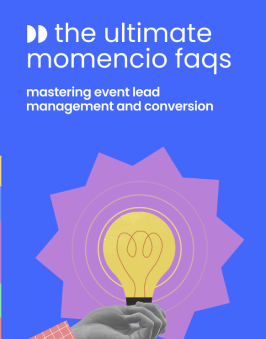
Bringing it all together
The post-trade show experience is the bridge between energy and execution. The teams that win build that bridge before the event, then run across it in 72 hours with a plan that any rep can follow. Capture context while you are still face to face. Sync it cleanly to CRM. Deliver a personalized microsite that continues the conversation. Let behavior drive the next step. Respect consent. Reactivate with value, not noise. Measure in a way that sales and finance accept. Then refine the system for the next show.
Do this, and events stop being a heroic effort that sometimes pays off. They become a reliable motion for creating qualified pipeline. With momencio, the steps above move from theory to workflow. Your team spends less time wrestling with spreadsheets and more time advancing real deals that started at the booth and accelerated in the first 72 hours.
